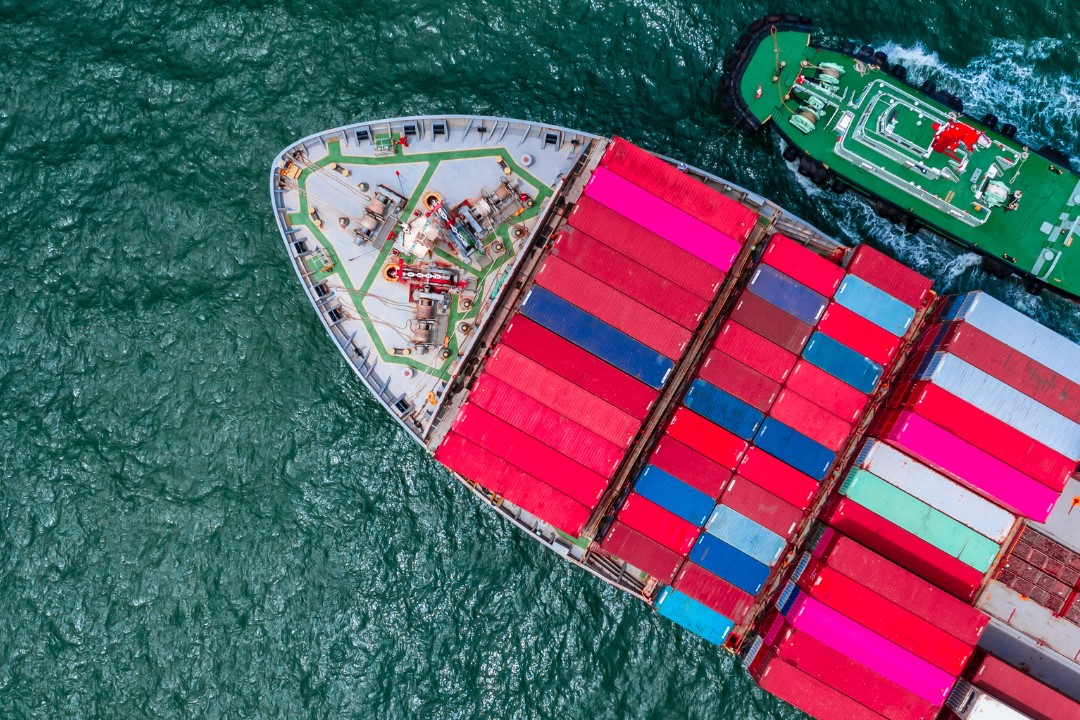
USDA Under Secretary for Trade and Foreign Agricultural Affairs Alexis M. Taylor reflects a century of growth, innovation, and progress in agricultural trade in the United States. She outlines the factors that have contributed to trade success, from technology to productivity gains, and highlights the challenges presented by global food insecurity and climate change.
This year marks the 100th anniversary of USDA’s Agricultural Outlook Forum, the department’s largest annual gathering. I was excited to participate in a panel session that reviewed the past one hundred years of agricultural trade in the United States and to acknowledge the forces that have shaped its evolution during the past century.
Productivity gains, economic growth, technological advancements, and market liberalization have all contributed to the expansion of agricultural trade. It is equally important to evaluate what we have learned from the prior one hundred years, as well as what lies ahead to ensure sustainable growth in international trade.
As a nation, we have a long history and tradition of taking on global challenges and addressing food insecurity around the world. Due in no small part to mechanization and scientific progress, the U.S. has nearly tripled its productivity spanning the last century, opening new opportunities for food and agricultural exports.
During World War II, nations around the world turned to the U.S. to compensate for war-torn Europe and Asia. As a result, in 1942, we exported more than $1 billion worth of food and agricultural products worldwide. Before the war ended, that number had doubled.
A major jump followed in the 1970s, as changing diplomatic relations opened new markets for agricultural exports to the (then) Soviet Union and China, and the strengthening of relationships U.S. exporters had with partners in both Europe and Japan. The combined effects of these changes coupled with technological innovation led to a 400 percent increase in U.S. exports by 1980, topping the $40 billion mark.
And in the past two decades, U.S. food and agriculture exports have been booming. The use of packaging innovation has enabled us to export more products, extend the shelf-life of packaged products, and reduce food waste, as well as drive forward new sustainable solutions. For the first time in history, food and agricultural exports from the U.S. exceeded $100 billion in 2008.
This new trade expansion was only the beginning. We exceeded $150 billion in exports for the first time in 2014, and just over a year ago, we were close to $200 billion.
Addressing Challenges
Despite rapid growth in U.S. food and agricultural exports, we still face many challenges, including global food insecurity.
To ensure everyone impacted has access to services and food, we must strengthen and expand our relationships with global trading partners. Though we are a global leader in food and agricultural exports, nearly 60 percent of our exports go to just four markets: China, Mexico, Canada, and the EU. At USDA, we are determined to maintain our strong presence in these countries, but as new potential markets emerge, we need to take advantage of these new opportunities to bring more U.S. products to all parts of the world.
While we remain committed to our established international customer base, we are also looking to expand our trade business in places like Africa, Latin America, the Middle East, and Southeast Asia.
Exploring New Opportunities
Through the Foreign Agricultural Service’s market development programs, we are increasing market diversification, which is enabling us to reach new international consumers. We have even seen U.S. exporters increase investments in several key markets during the past 3 years. Undoubtedly, diversification is important for growth opportunities in the industry, as well as hedging risks from market contraction and general volatility.
Globally, we are experiencing rapid GDP growth, expanding middle classes, urbanizing populations, and increasingly modern food retail systems. The early entry of U.S. food and agricultural products into those markets could establish life-long consumers.
Nevertheless, trade is an often-overlooked tool for addressing both food security and climate resilience. And unfortunately, there are many factors contributing to global food insecurity, from conflicts to droughts to import barriers. Our collaboration with the international community is vital to combating food and nutrition insecurity.
Tackling Climate Change
It is understood that climate change is one of the most important challenges facing our planet today. In addition to creating uncertainty for our nation, climate change threatens the stability and resilience of our agriculture sector, directly impacting U.S. producers. Farmers and ranchers are on the front lines of climate change, which uniquely positions them to contribute to climate solutions by implementing climate-resilient production practices.
Consumers and the private sector are increasingly interested in food that is grown in a sustainable, climate-smart way, creating a substantial market opportunity. And, during the past three years, USDA has emerged as a leader in advancing climate-smart agriculture to mitigate and adapt to global climate change.
The challenges of the last 100 years have yielded many opportunities and have allowed the U.S. to leverage advancements in technology and innovation to tackle those challenges. The lessons learned will guide us as we move forward into the next 100 years of U.S. agricultural trade.


